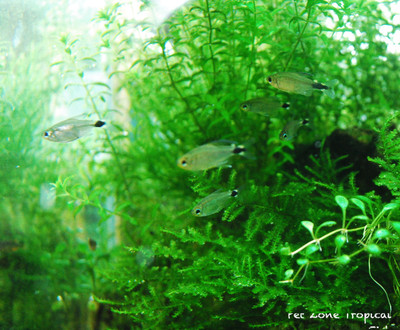Kitty Tetra
Posted by Max Gandara on on 9th Apr 2025
Kitty Tetra
Welcome to the enchanting realm of Kitty Tetra! Whether you're an avid aquarist or just dipping your toes into the aquatic hobby, Kitty Tetra is sure to captivate you with its vibrant colors and playful nature. In this blog, we'll dive into everything you need to know about this delightful species, from their origins and appearance to their care requirements and compatibility with other fish.
Origins and Natural Habitat
The Kitty Tetra, scientifically known as Hyphessobrycon heliacus, originates from the lush, freshwater rivers of South America. Found primarily in the warm, slow-moving waters of the Amazon Basin, these fish are accustomed to densely vegetated environments where they can dart among the plants and hide from predators. Their natural habitat is a key factor in their care requirements, as replicating these conditions will ensure their health and happiness in your home aquarium.
Appearance and Behavior
One of the most striking features of the Kitty Tetra is its vibrant coloration. These fish boast a shimmering body adorned with hues of metallic silver, gold, and shades of pink. This dazzling display is complemented by their flowing fins, which can feature a gradient of colors, including orange and red. The Kitty Tetra's small size, usually around 1.5 inches in length, makes them an ideal choice for both small and large aquariums.
In terms of behavior, Kitty Tetras are known for their active and social nature. They thrive in groups of six or more, as they are shoaling fish that rely on the company of their kind to feel secure and exhibit their best behavior. Their playful antics and synchronized swimming provide endless entertainment for any aquarist.
Care Requirements
Taking care of Kitty Tetras is relatively straightforward, making them an excellent choice for both beginners and seasoned fishkeepers. Here are some essential care tips to ensure your Kitty Tetras thrive:
-
Tank Size: A minimum tank size of 20 gallons is recommended to accommodate a small school of Kitty Tetras, allowing ample space for swimming.
-
Water Conditions: Maintain a water temperature between 72°F and 82°F, with a pH level of 6.0 to 7.5. Regular water changes and a good filtration system are crucial to keep the water clean and clear.
-
Diet: Kitty Tetras are omnivorous and enjoy a varied diet. Provide them with high-quality flake food, supplemented with live or frozen foods like brine shrimp and daphnia for optimal health.
-
Aquarium Setup: Decorate the tank with plenty of plants, driftwood, and hiding spots to mimic their natural habitat and reduce stress.
Compatibility with Other Fish
Kitty Tetras are peaceful fish that generally get along well with other non-aggressive species. Ideal tank mates include other small tetras, rasboras, and peaceful bottom dwellers like corydoras catfish. Avoid keeping them with larger, predatory fish that may view them as a snack.
Breeding Kitty Tetra
Breeding Kitty Tetras can be a rewarding experience for dedicated aquarists. To encourage breeding, set up a separate breeding tank with slightly acidic water and a temperature around 78°F. Provide plenty of fine-leaved plants or spawning mops where the female can lay her eggs. Once the eggs are laid and fertilized, remove the adults to prevent them from eating the eggs. The eggs typically hatch within 24 to 36 hours, and the fry become free-swimming a few days later.
Conclusion
The Kitty Tetra is a delightful addition to any freshwater aquarium, offering a splash of color and lively behavior that can enhance the beauty and dynamic of your aquatic world. With proper care and attention, these charismatic fish can thrive and bring joy to your tank for years to come. Whether you're a novice or an experienced fishkeeper, the Kitty Tetra is a species that will undoubtedly capture your heart.

